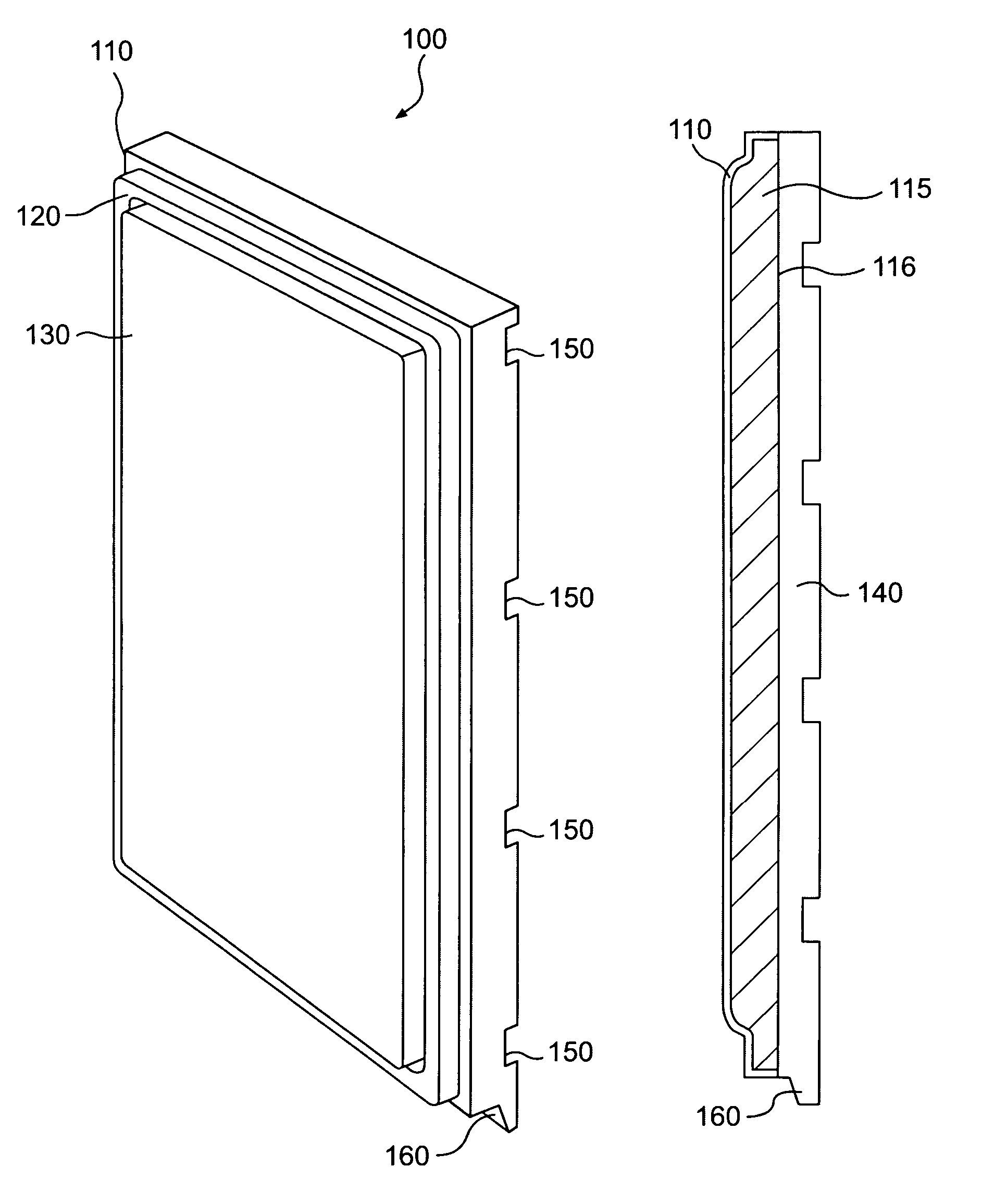Insulated cargo container doors
a cargo container and door technology, applied in the field of insulated doors for cargo containers, can solve the problems of lack of thermal efficiency, heat loss in these containers, and the thermal efficiency of cargo container doors of this type has not been as high as desired by users of these cargo containers,
- Summary
- Abstract
- Description
- Claims
- Application Information
AI Technical Summary
Benefits of technology
Problems solved by technology
Method used
Image
Examples
Embodiment Construction
[0022]A. Introduction
[0023]As described below, apparatus consistent with the present invention will now be described with respect to one embodiment of an insulated door for a cargo container: an insulated door for a boxcar. The invention as claimed, however, is broader than insulated doors for boxcars and extends to insulated doors for other large insulated cargo containers, such as, shipping containers used on seagoing container vessels, truck trailers, straight trucks, refrigerated buildings, or the like.
[0024]B. Apparatus
[0025]FIGS. 1-4 illustrate four views of an insulated door consistent with one embodiment of the invention. As shown in FIGS. 1-4, in one implementation, an insulated door 100 includes a liner 110, a gasket 120, and a door 140 (not shown in FIGS. 1-3, but shown in FIG. 4). As shown in FIGS. 1-4, liner 110 is attached to a surface of door 140 partially surrounding door 140, and gasket 120 is attached to the perimeter of the interior surface of liner 110. Door 140,...
PUM
 Login to View More
Login to View More Abstract
Description
Claims
Application Information
 Login to View More
Login to View More - R&D
- Intellectual Property
- Life Sciences
- Materials
- Tech Scout
- Unparalleled Data Quality
- Higher Quality Content
- 60% Fewer Hallucinations
Browse by: Latest US Patents, China's latest patents, Technical Efficacy Thesaurus, Application Domain, Technology Topic, Popular Technical Reports.
© 2025 PatSnap. All rights reserved.Legal|Privacy policy|Modern Slavery Act Transparency Statement|Sitemap|About US| Contact US: help@patsnap.com



